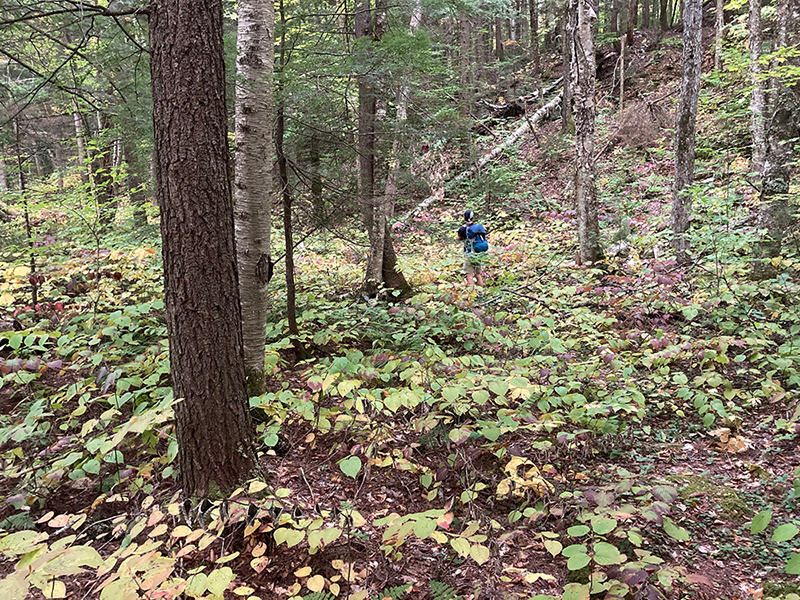In this era of climate change, we often hear two terms related to the management of forests – mitigation and adaptation. Mitigation refers to increasing carbon sequestration in forests in order to reduce carbon dioxide in the atmosphere. Adaptation refers to managing forests for structural complexity and species diversity in order to increase resistance to or resilience from disturbances (i.e., native and non-native insect outbreaks, fire, drought, and windstorms) that are becoming more frequent and intense with climate change. While the focus has been on promoting active management approaches for meeting these objectives, there are few empirical assessments of the outcome of managing less.

In a new paper published in Forest Ecology and Management in July, Highstead senior ecologist Ed Faison and collaborators from Harvard Forest examined the mitigation and adaptation qualities of forests protected from cutting and shaped by natural processes (“wildlands”) in the Northeastern United States. Carbon storage was 20% higher in wildlands compared to environmentally similar forests in which harvesting and management were permitted, the authors found. Differences in carbon storage were especially high in the wildlands of New York (+32%) and Maine, (+34%) where the length of time as wildlands was long and where recent harvesting intensity was high in the surrounding unprotected forests.
Interestingly, the rate of carbon uptake did not differ between wildlands and unprotected forests overall; however, it was 37% higher in wildlands than in forests that had been recently harvested within the past 15-20 years. This result differed from the conventional wisdom that forest management increases the rate of carbon absorption in forests. Although recent harvests promoted the growth of individual trees in this study by increasing growing space, harvests reduced carbon absorption in the forest overall because cutting resulted in fewer trees doing the work of photosynthesis.
Structural complexity was also generally higher in wildlands, with numbers of large live and large dead trees, maximum tree height, and variation of tree sizes greater in wildlands than in unprotected forests. The number of tree species did not differ between the two protection categories. Overall, the results suggest the need for forest managers to reexamine the rush to incorporate more management for climate adaptation and mitigation in northern temperate forests not specifically being managed for wood products. Forest managers may consider instead the multiple benefits of stricter protection and allowing natural processes to do more.